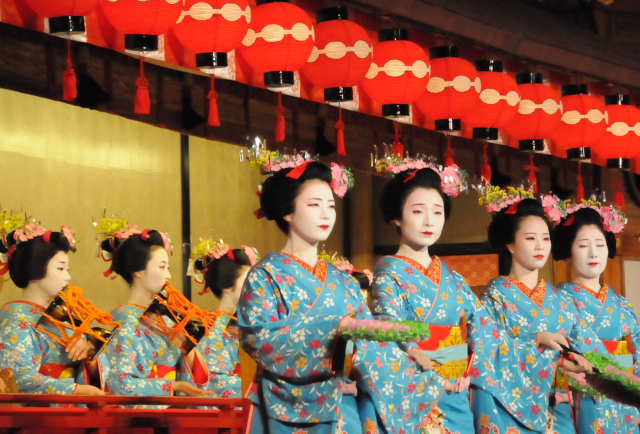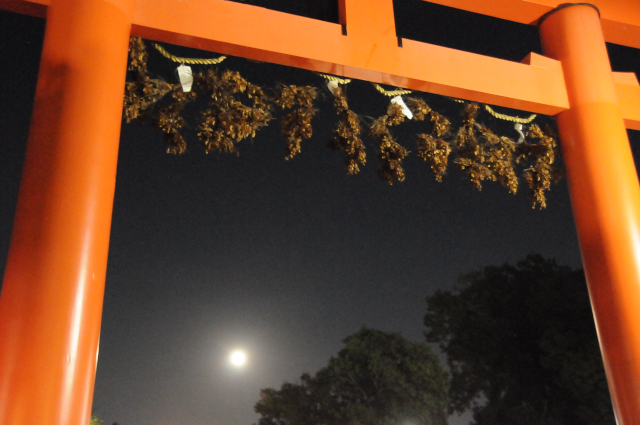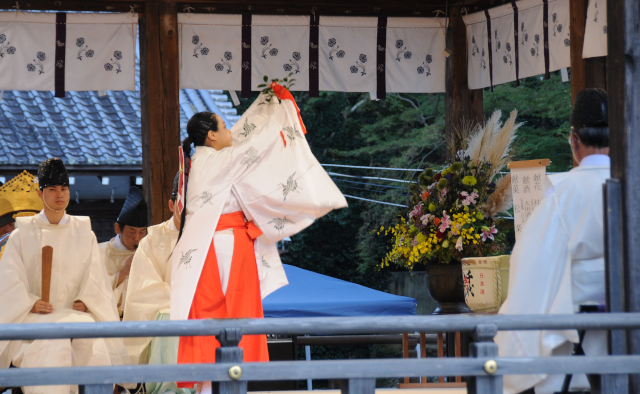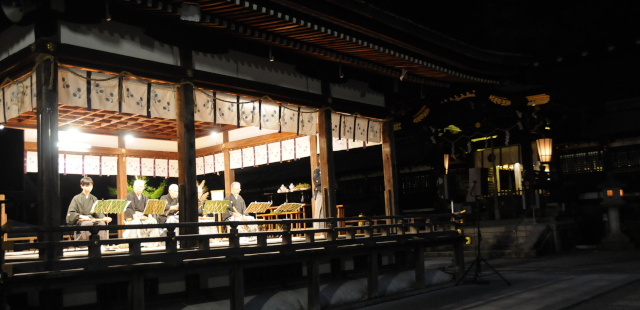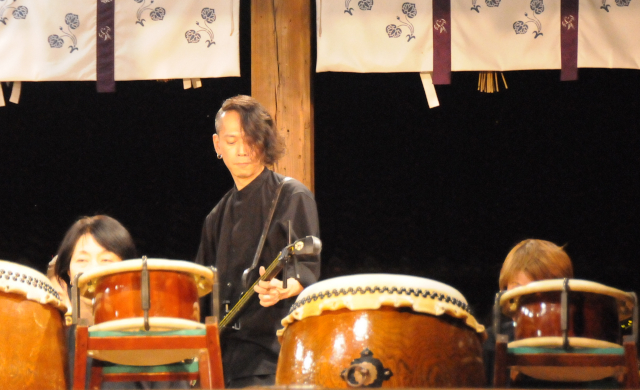Last Friday night was a full moon, and the full moon in September is considered the most beautiful by Japanese people. That’s why there are many moon viewing parties going on everywhere, from the expensive dinners and tea ceremonies in quiet gardens to festival-like events with food stalls in shrines and temples, and there are some people who just go out with a can of beer and organise their own moon-viewing picnic.
This year, I took some time out to visit Shimogamo Shrine for their moon viewing event. I live very close to the shrine, so it’s easy to get to, and my choice was partly driven by the cloudy skies that looked like it would start to rain any moment. At Shimogamo Shrine, the full moon is a rather minor accessory to the events, the big thing is a concert of traditional Japanese music. It lasts for three hours, and there are a number of participants. I am not sure if they are the same every year, but this year we had:
Five people playing the shakuhachi to kick off the concert. I was very pleased about that, and I found it quite interesting that my own shakuhachi sounds so much deeper than the ones they played. I’m wondering if I’m doing something wrong, actually, that’s very likely since most of the times, I cannot get a tone out of it anyway…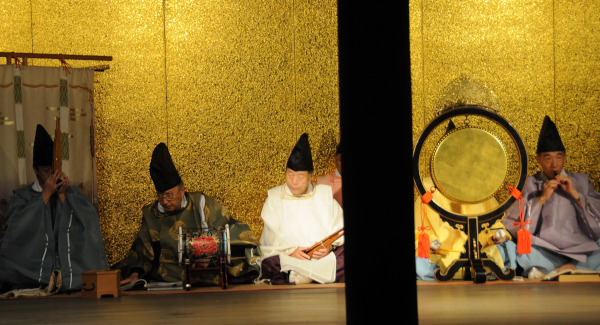
Afterwards we had a gagaku concert – traditional Japanese court music. It is still not my thing, I find it excruciatingly boring, and I am wondering if the people back in Heian times really and honestly enjoyed this kind of music.
Then, a large troupe of koto players took the stage, and this was the part I enjoyed most. They played very lively and modern sounding pieces, but from the reaction of the spectators next to me who could hum the tunes alongside the musicians, I guess that the pieces must have been very old and popular ones.
The biwa music that followed was less exciting to be honest, but still my fellow spectators knew the tunes. I could not help wondering whether half of the musicians were Buddhist priests or nuns – shaved heads and all.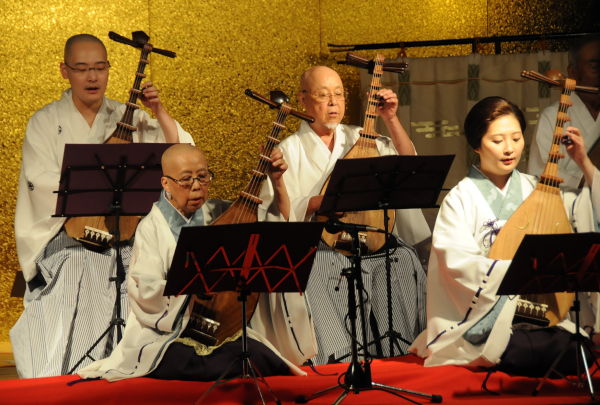 After a biwa solo recital and one more fun koto part, we got to the highlight of the evening: another gagaku concert. This time, however, the music accompanied dancers, which made the whole experience much more bearable. We had three dances, first four children dressed in butterfly outfits, then two men who might have been courtiers, and finally, a single performance of a demon, complete with mask, sword, and spear.
After a biwa solo recital and one more fun koto part, we got to the highlight of the evening: another gagaku concert. This time, however, the music accompanied dancers, which made the whole experience much more bearable. We had three dances, first four children dressed in butterfly outfits, then two men who might have been courtiers, and finally, a single performance of a demon, complete with mask, sword, and spear.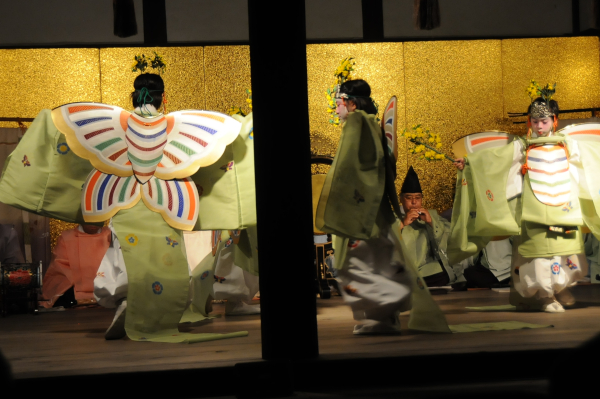
The dance movements were extremely formalised, almost stiff, to be honest, the dancers didn’t look very graceful. Only the demon at the end was allowed to brandish his spear in a more realistic way, it must have been a part for a very advanced performer. Still, all the costumes were fantastic and elaborately decorated, it was a joy to just look at all the details. I am sure the colors and embroidery have some hidden meaning, but even so, they were lost on me.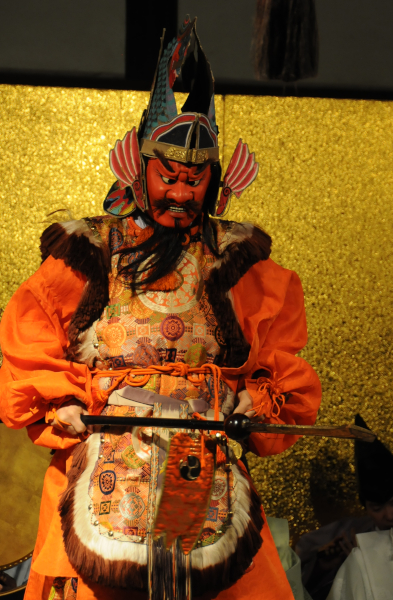
I bought a ticket for reserved seats in front of the stage and I did not regret it – standing for three hours is no fun at all. The ticket also included a cup of green tea with sweets, but I would have had to leave my seat to get it. I thought about it and, looking back, I should have just gone during the first gagaku concert, but it was fine anyway. In the end, I had a nice evening – and when I walked home, the moon came out from behind the clouds for a brief “good night”.





